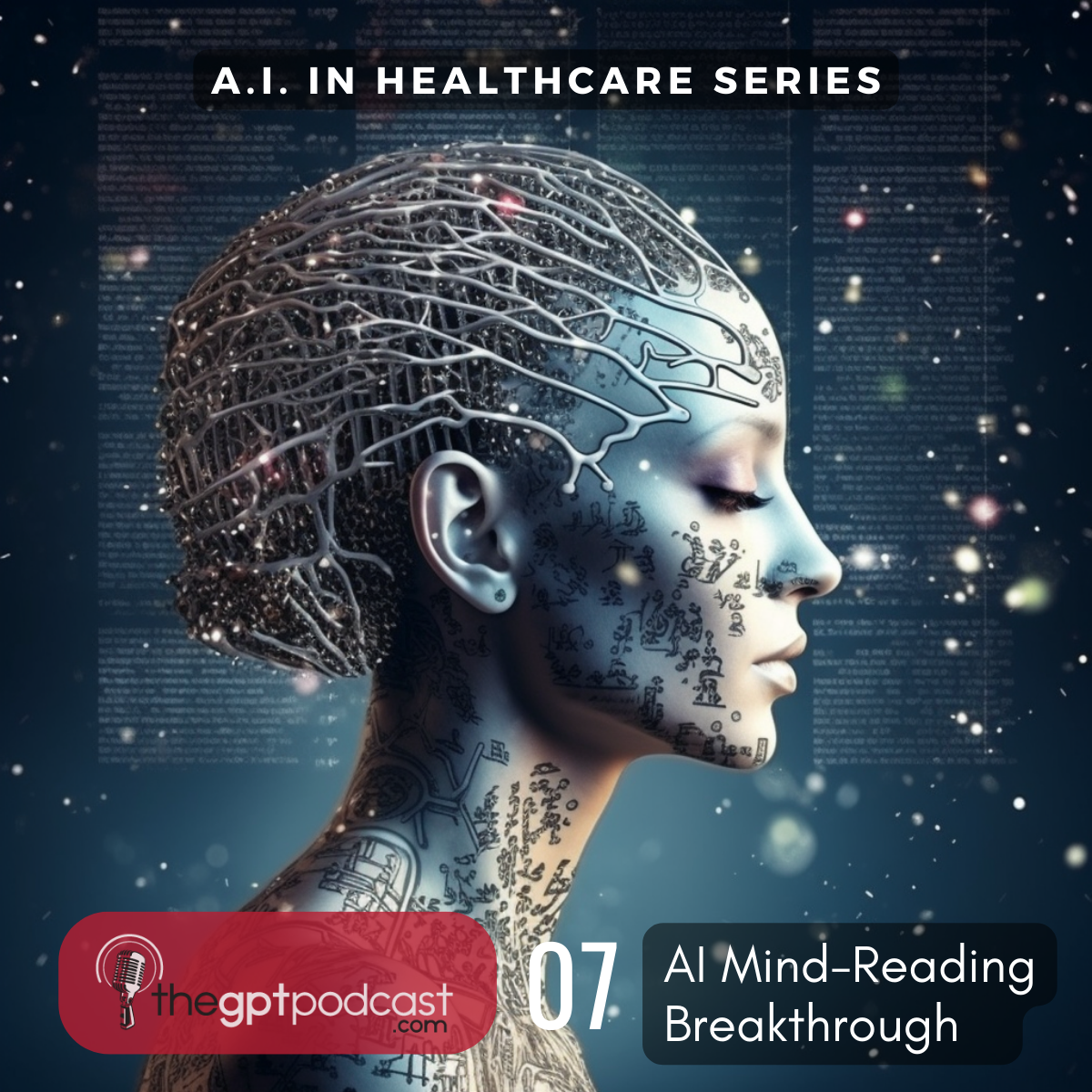AI Mind-Reading Breakthrough: Translating Thoughts into Text
🧠💡 Researchers at the University of Texas at Austin have made a groundbreaking development in AI and neuroscience. They've created a decoder that can translate brain activity into text, allowing for non-invasive mind-reading! 🤯

In this episode of the Podcast we discuss a groundbreaking development, researchers at the University of Texas at Austin have created an AI-based decoder capable of translating brain activity into a continuous stream of text. This innovative technology allows for non-invasive mind-reading, a significant leap forward in the field of neuroscience and artificial intelligence.
The Decoder and How it Works
The decoder works by reconstructing speech while people listen to a story or even silently imagine one, using only functional Magnetic Resonance Imaging (fMRI) scan data. This is a major advancement because previous language decoding systems required surgical implants.
The fMRI technique measures brain activity by detecting changes associated with blood flow. It has a high spatial resolution, but there's an inherent time lag which makes tracking activity in real-time impossible.
To overcome this limitation, the researchers leveraged large language models, like the one underpinning OpenAI’s ChatGPT. These models can represent the semantic meaning of speech in numbers, allowing the scientists to look at which patterns of neuronal activity corresponded to strings of words with a particular meaning rather than attempting to read out activity word by word.
Training the Decoder
Training the decoder was an intensive process. Three volunteers were required to lie in a scanner for 16 hours each, listening to podcasts. The decoder was trained to match brain activity to meaning using a large language model, GPT-1, a precursor to ChatGPT.
Accuracy and Limitations
The results of the decoder were impressive. About half the time, the text closely – and sometimes precisely – matched the intended meanings of the original words. However, the decoder was personalized, and when tested on another person, the readout was unintelligible.
The decoder sometimes misinterpreted the information and struggled with certain aspects of language, including pronouns. Also, it was possible for participants on whom the decoder had been trained to thwart the system, for example by thinking of animals or quietly imagining another story.
Future Applications and Developments
This technology could potentially restore speech in patients struggling to communicate due to a stroke or motor neurone disease. It could also be used to read thoughts from someone dreaming or investigate how new ideas spring up from background brain activity.
The team is now hoping to assess whether the technique could be applied to other, more portable brain-imaging systems, such as functional near-infrared spectroscopy (fNIRS).
In conclusion, this non-invasive mind-reading technology is a significant advancement in the field of AI and neuroscience. It opens up a host of experimental possibilities and can be a basis for the development of brain-computer interfaces. Despite some limitations, the potential applications of this technology are vast and revolutionary.

